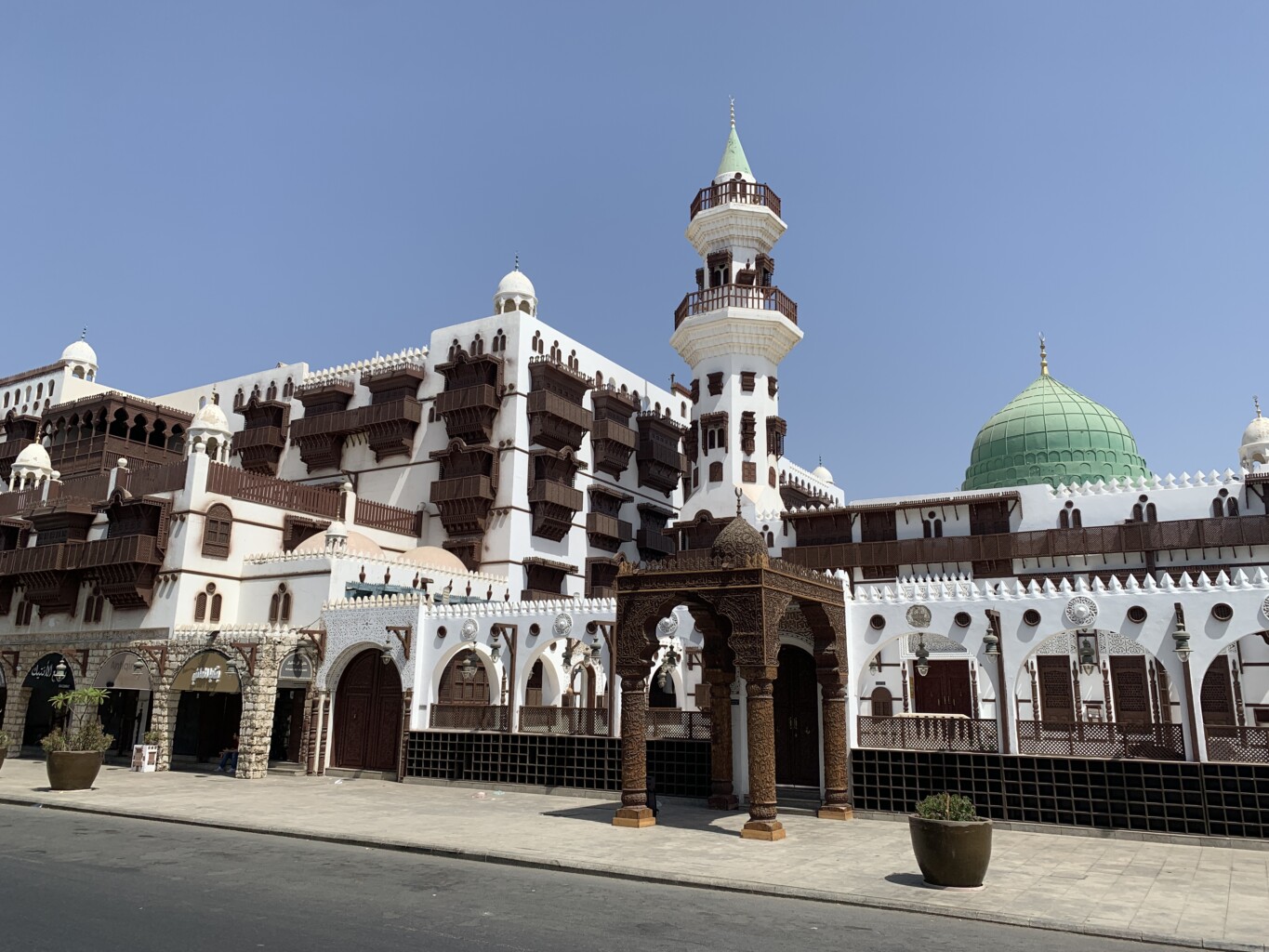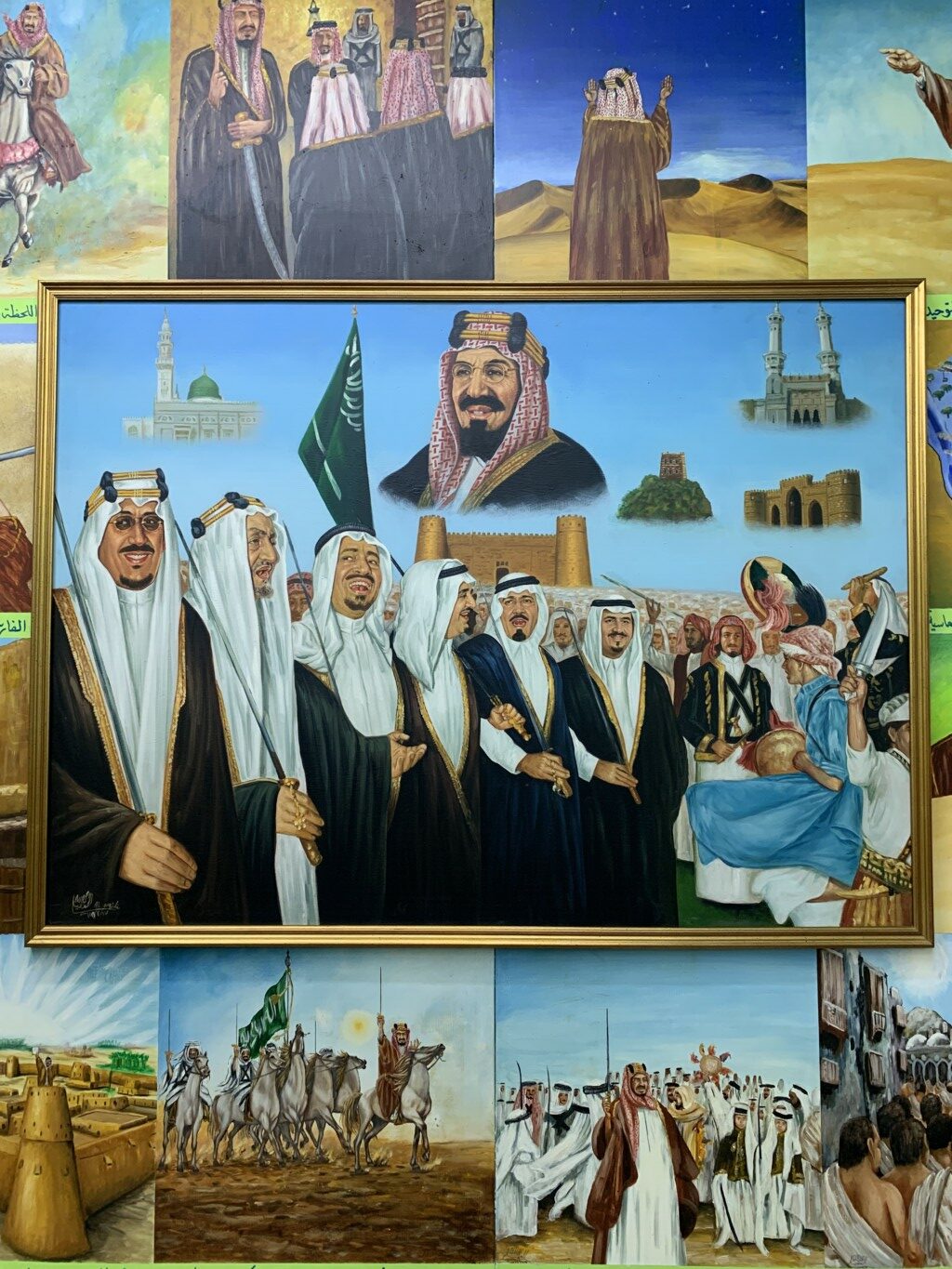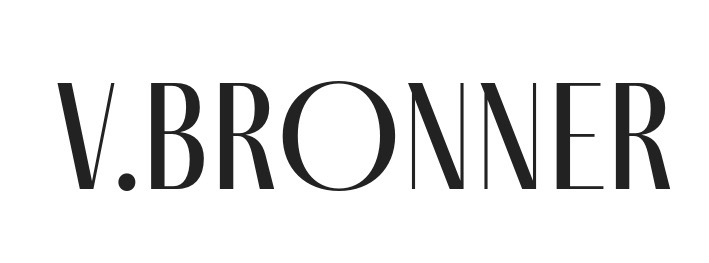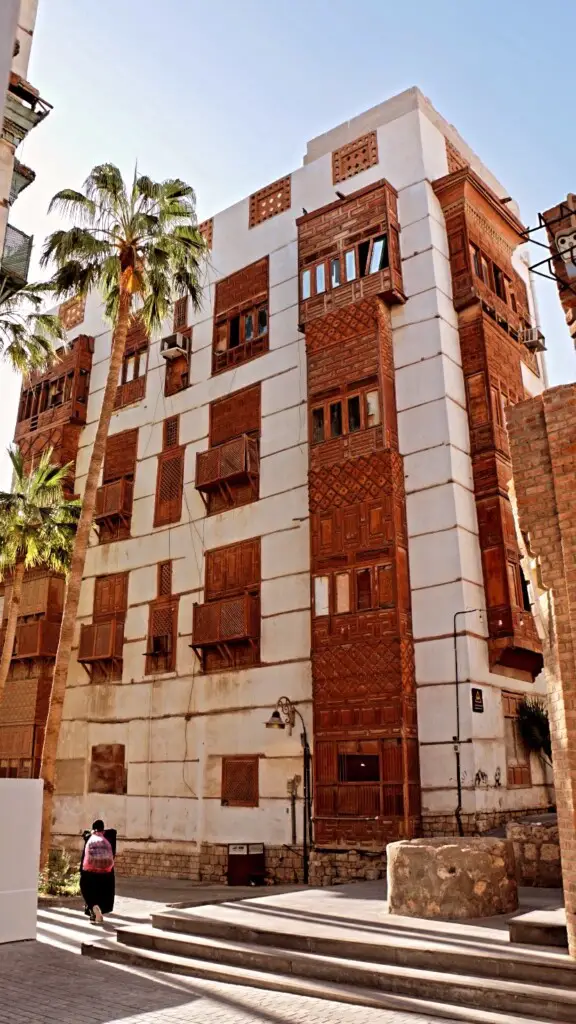
If you are planning a trip to Jeddah, Saudi Arabia and are wondering what the best things to do in the this Red Sea city, then look no further than to this blog post! Having recently visited Saudi Arabia and Jeddah, I can from personal experience tell you what the best places to visit are in 2024.
Jeddah is located on the gorgeous Red Sea and is also known as the gateway to the holy cities of Islam, Mekka and Medina. However Jeddah is also known as a Guinness World Record Holder, holding several records, such as the highest water fountain and the tallest lighthouse in the world.
Continue reading to learn about the best things to do in Jeddah in 2024.
A Brief History of Jeddah
First, to put things into perspective, I like to begin with a short recap of the history of the city or country that I write about. Knowing a bit about the history of city or a country makes you better understand what has shaped each location and also makes you notice details you might otherwise have overlooked.
Ancient Trade Hub
Jeddah’s historical prominence as a trade hub is rooted in its strategic position along the Red Sea, a critical maritime route that linked the cultures and economies of Africa, the Middle East, and Asia. From ancient times, the city served as a bustling port where goods such as spices, silks, and precious metals were exchanged. The diverse array of traders and travelers passing through Jeddah brought with them a variety of cultural influences, enriching the local culture with practices, languages, and religions from distant lands. This vibrant exchange not only bolstered Jeddah’s economic status but also established it as a place where different cultures met and mixed.
Gateway to Mecca
As the closest major city to Mecca, Jeddah has historically served as the primary gateway for millions of Muslim pilgrims on their journey to perform the Hajj, one of the five pillars of Islam. This pivotal role significantly shaped Jeddah’s cultural and economic landscape. The influx of pilgrims every year provides a steady source of income for the city through services like lodging, transportation, and food. Moreover, the religious significance of the city has attracted investments in infrastructure and increased its political and social status within the region, helping to foster a diverse, multicultural community.
Ottoman Rule
In the 16th century, recognizing Jeddah’s strategic importance as a trade port and a gateway to Islam’s holiest cities, the Ottoman Empire took control and fortified the city. The Ottomans built an impressive wall around Jeddah, complete with gates and watchtowers to defend against potential invasions and to maintain control over the pilgrimage route to Mecca. These fortifications stood until the 20th century and were instrumental in shaping the city’s historical and architectural heritage. Under Ottoman stewardship, Jeddah enjoyed stability, which further encouraged trade and attracted scholars, artists, and traders from across the Islamic world.
Growth in the 20th Century
The discovery of oil in the mid-20th century transformed Saudi Arabia, including Jeddah. The city witnessed unprecedented economic growth and became a focal point for modernization and development. Jeddah expanded rapidly, embracing new technologies and architectural styles, transforming from a historic port into a bustling, cosmopolitan urban center. This period also saw the establishment of new businesses, educational institutions, and cultural venues, turning Jeddah into a significant commercial and cultural hub within the Middle East.
Modern Times
Today, Jeddah is a mix of its rich heritage, as a trading port and as a religious gateway to Mekka and Medina, and the newfound wealth with the discovery of oil leading to large investments and businesses. The city of Jeddah continues to grow, with developments such as the Jeddah Tower, set to be among the world’s tallest buildings, symbolizing its ambitions on the global stage. As a progressive city, Jeddah also reflects the broader social and economic reforms occurring across Saudi Arabia, aiming to diversify the economy, promote a more moderate form of Islam, and empower women and a younger, more dynamic population.
1. Jeddah Old Town: Al-Balad (UNESCO World Heritage)
Al-Balad, also known as the “old town” of Jeddah, is probably the most authentic thing to do in Jeddah! Al-Balad was designated a UNESCO World Heritage Site in 2014 due to its rich multicultural history and unique architectural heritage. Historically, Al-Balad served as Jeddah’s port to the Red Sea, facilitating trade routes between the East and the West and also as the main gateway for Muslim pilgrims en route to Mecca. This area is distinguished by its unique buildings made from coral stone, adorned with intricate wooden Roshan (bay windows), which exemplifies the region’s adaptation to its climate and the multicultural influences of its former traders and residents.
What to do in Al-Balad:
Nasseef House: Once the residence of one of Jeddah’s most influential families, Nasseef House has been transformed into a museum and cultural center. It offers insights into the lifestyle of Jeddah’s merchants during the late 19th and early 20th centuries. The house itself is a stunning perfect example of traditional Hejazi architecture.
Al-Balad’s Souqs (Marketplaces): A souq is known as a street market in Arabic and wandering through the bustling souqs of Souq Al Alawi is of course a must when visiting Al-Balad. These marketplaces are lined with shops selling everything from traditional garments and spices to gold and handicrafts. It’s a vibrant place and probably the best place to experience local life and find unique souvenirs.
Historic Mosques: Al-Balad is home to several historic mosques, including the Al-Shafei Mosque and the Uthman bin Affan Mosque. These mosques are not only places of worship but also showcase beautiful Islamic architecture.
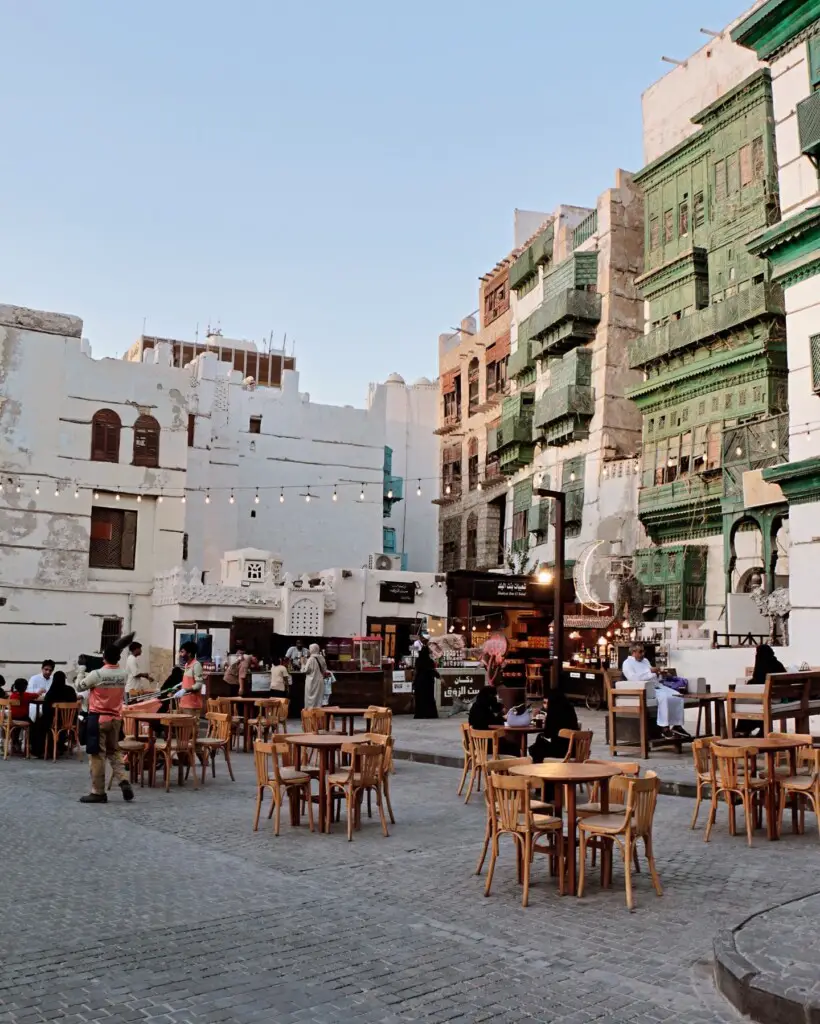
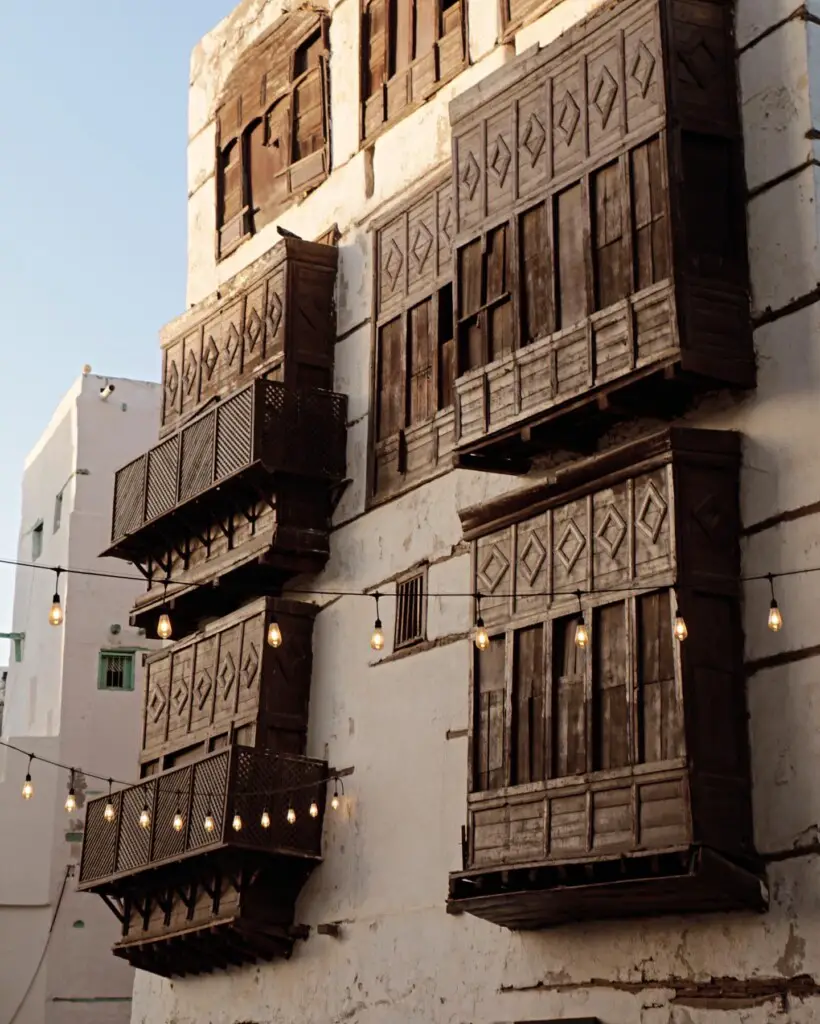
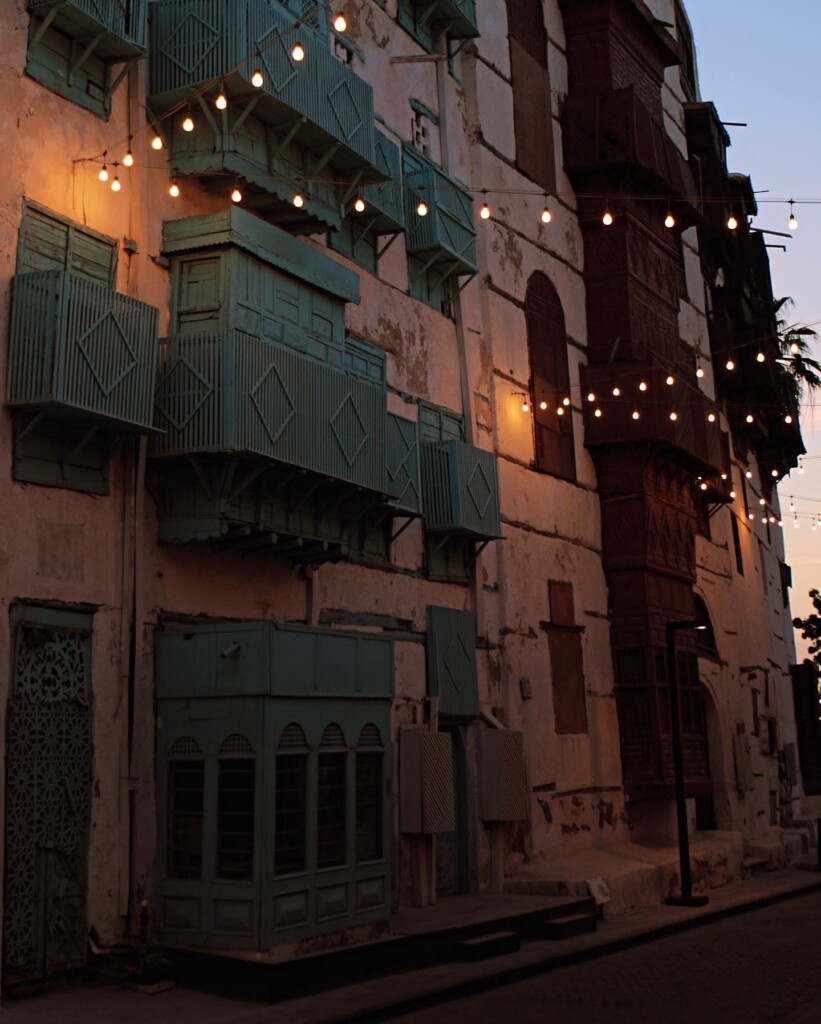
2. Relax Along the Jeddah Corniche
The Jeddah Corniche is a waterfront promenade along the Red Sea in Jeddah. It spans about 30 kilometers and is a major attraction for both locals and visitors. Locals come here to relax in the Rea Sea breeze in the cooler evening temperatures. The area includes beaches, parks, art installations, and recreational facilities, which makes it a great spot for relaxation with friends and families. It is also here that many of the city’s landmarks are located (also mentioned in this list) like the iconic King Fahd’s Fountain, one of the tallest fountains in the world, as well as the Floating Mosque, which is built directly over the water.
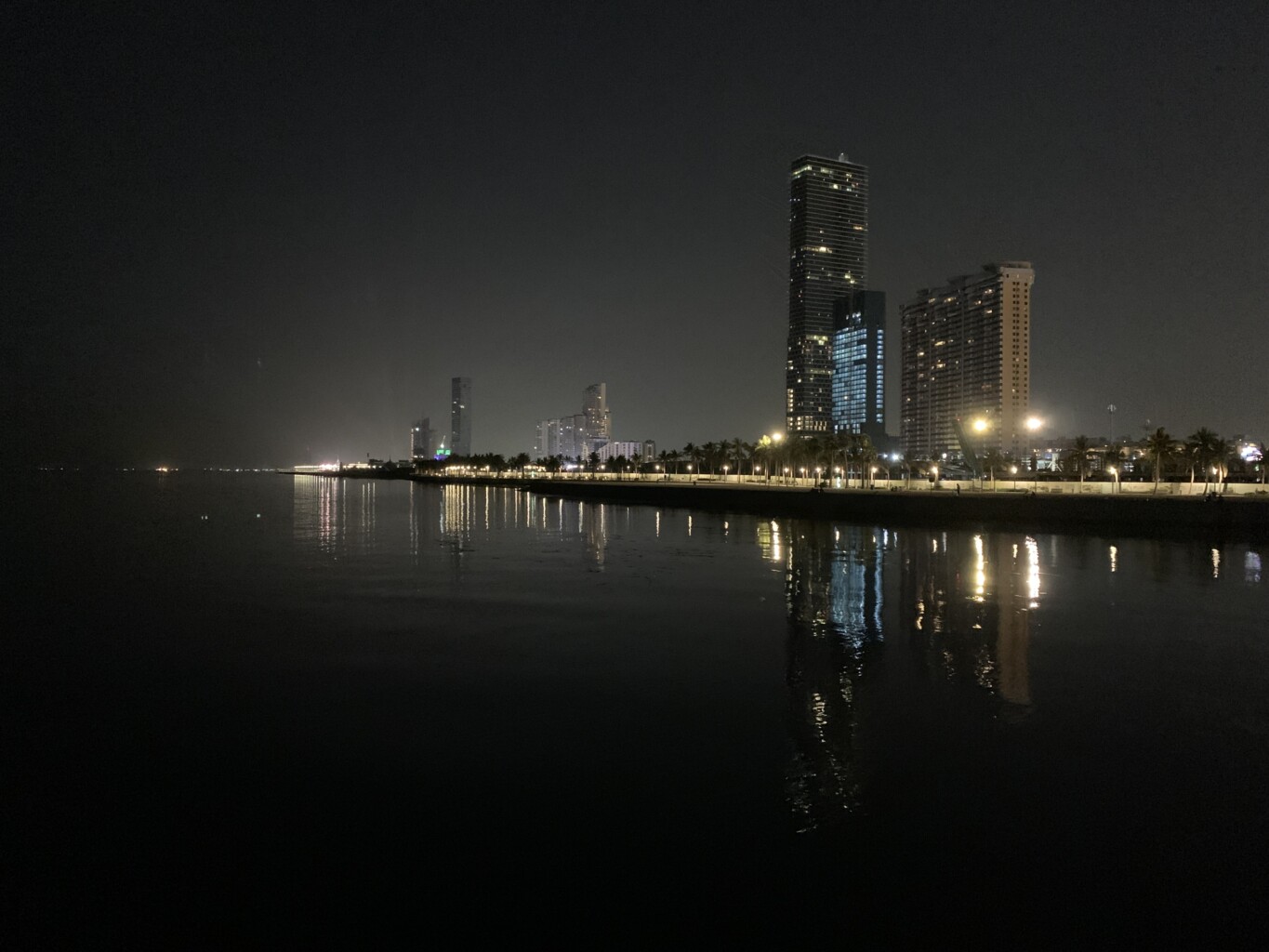
3. The Floating Mosque
The Floating Mosque, also known as Ar-Rahmah Mosque, is one of the most notable landmarks in Jeddah, located directly on the Red Sea coast. This mosque earns its name from its unique design that makes it appear to float on the water at high tide. It combines contemporary design with traditional Islamic architecture, featuring a striking white facade, a large dome, and a minaret that stands out against the blue sea backdrop. The mosque is not only a place for worship but also a popular tourist attraction, offering visitors a peaceful setting for contemplation, especially scenic at sunset. The mosque is open between 4 pm to 9 pm and is open to both worshippers and tourists.
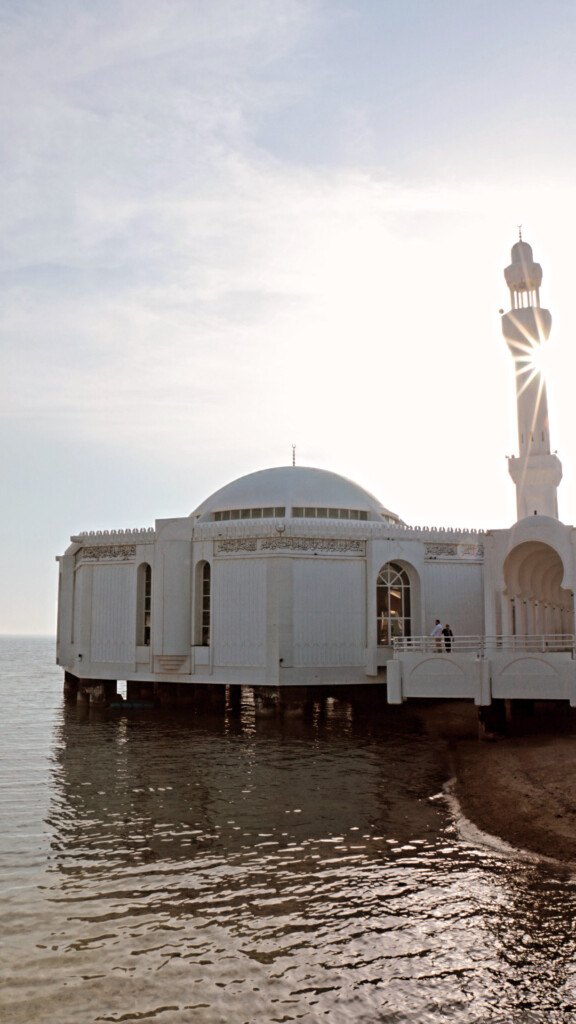
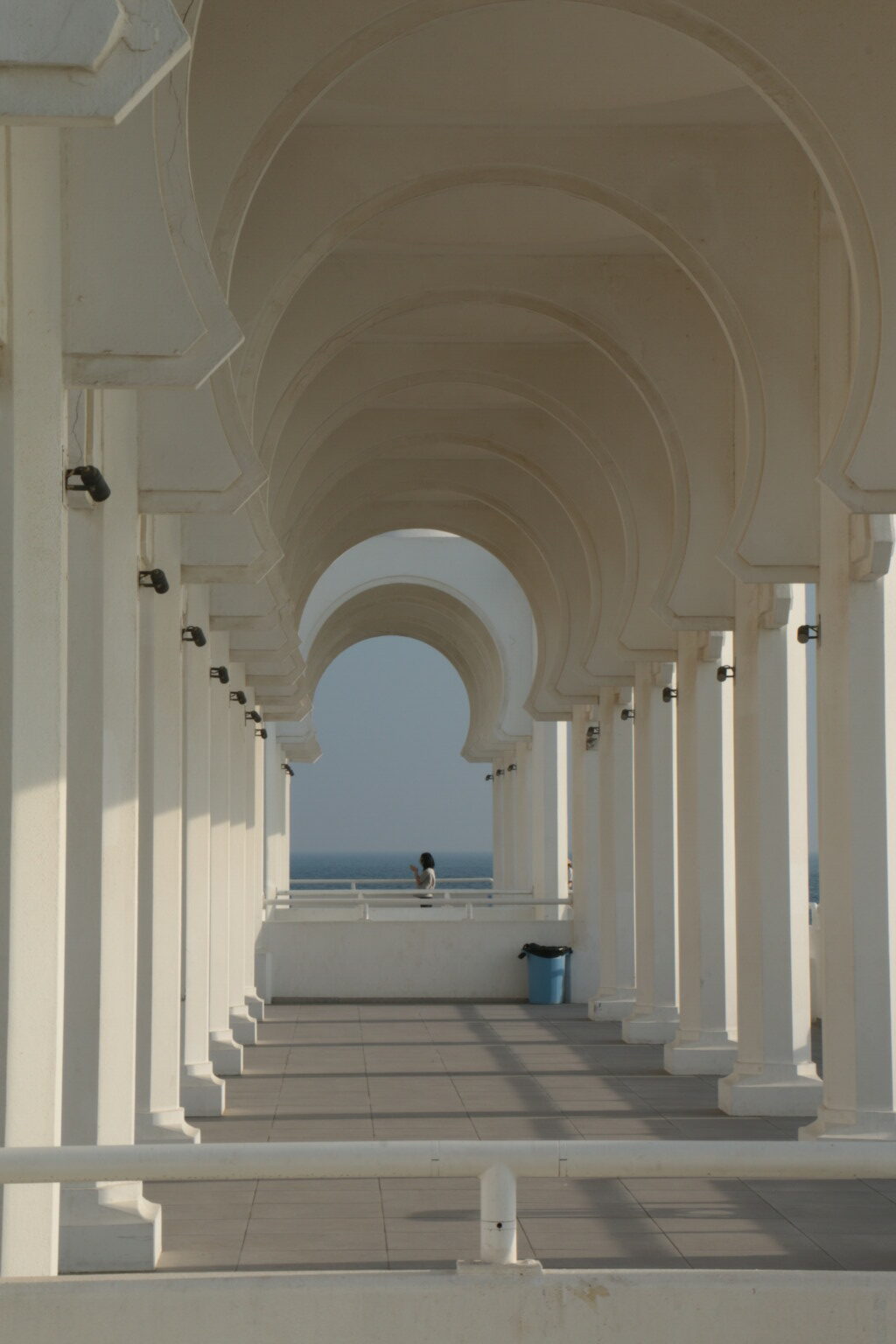
4. King Fahd’s Fountain
King Fahd’s Fountain, often referred to as the Jeddah Fountain, is an interesting feature in Jeddah and a Guinness World Record holder for the tallest fountain in the world, shooting water up to about 312 meters (1,024 feet) into the air—which is higher than the Eiffel Tower if you don’t count its antennas! The water jets out at speeds exceeding 375 kilometers (233 miles) per hour, and the entire display is beautifully illuminated by over 500 spotlights at night, which is also the only time it is active (at least from what I saw).
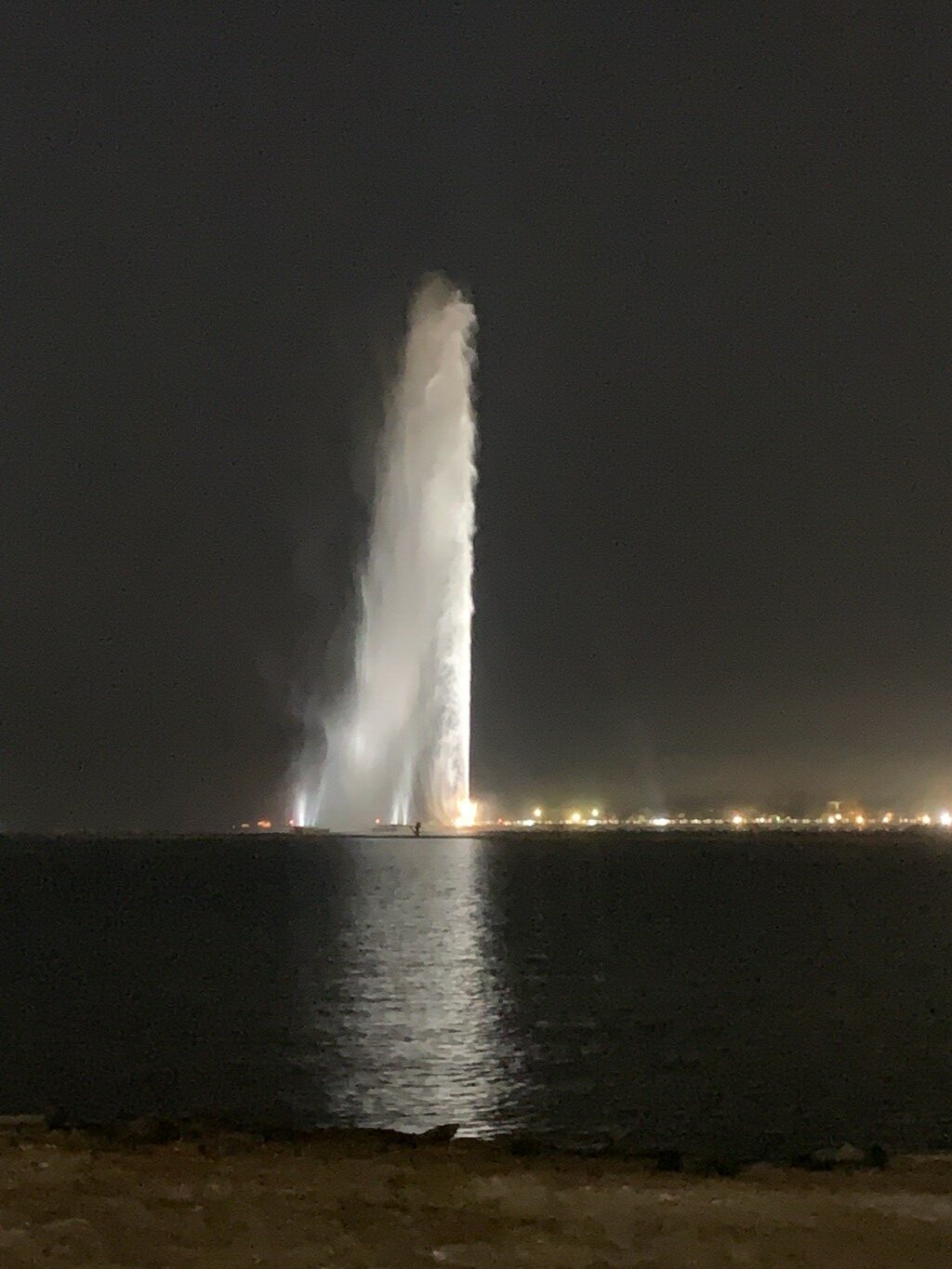
5. Dive Into the Red Sea
As you know Jeddah is situated on the beautiful Red Sea and you might decide that you want to go for a swim when in town. This can be easier said than done as there is a complete lack of public beaches along the Jeddah boardwalk. For both cultural and legal reasons it makes swimming and sunbathing very difficult. Instead the options you have are mainly private beaches:
Silver Sands Beach: This is one of the most popular private beaches in Jeddah. It is located roughly a 45 min drive from Jeddah and it’s a well-maintained beach resort with clear water and offers various amenities like beach volleyball, a swimming area, and sun loungers. In order to access the beach you need to have a membership or buy a day pass on the spot (costs about 40$).
Obhur: As located to the north of Jeddah and a 45 min drive away lies Obhur, an area that features many private beach resorts. The beaches here are excellent for swimming and water sports. The same concept works here as at the Silver Sands beach, where visitors need to pay a fee to access the beach.
6. Jeddah Tower
Jeddah Tower, previously known as Kingdom Tower, is a skyscraper that is currently under construction in Jeddah and set to become the tallest building in the world, and thereby surpassing the Burj Khalifa in Dubai. The tower’s planned height is about 1,000 meters (approximately 3,281 feet). The project includes not just the tower but also surrounding developments such as hotels, residential areas, and shopping facilities. Construction began in 2013, but it has faced several delays, due to financial issues, economic fluctuations, and technical challenges, the building is as of my recent visit to Jeddah in 2024 still not completed and the completion date remains uncertain.
7. Discover Contemporary Art at Athr Gallery
If you are interested in contemporary art and the cultural landscape in Saudi Arabia, then paying a visit to the Arthr Gallery is a must when visiting Jeddah.
The Athr Gallery is one of the leading platforms for contemporary art in the Middle East, known for its commitment to fostering artistic dialogue and showcasing cutting-edge art by middle eastern artists. Established 2009, the gallery plays a pivotal role in the Saudi art scene by representing a range of emerging and established artists, hosting exhibitions, art talks, and educational workshops.
8. Shop and Dine at Red Sea Mall
The Red Sea Mall in Jeddah is one of the largest shopping centers in Saudi Arabia. It really is massive! It’s located on King Abdul Aziz Road, which is a major thoroughfare in the city. The mall features a wide range of local and international brands, spanning fashion, electronics, and home goods, making it a popular destination for shoppers.
Additionally, the mall includes various entertainment options such as a large cinema complex (which was banned in Saudi only a few years ago!), children’s play areas, and frequent cultural events and exhibitions. It also houses numerous dining options, from fast food to upscale restaurants, catering to diverse tastes.
The Red Sea Mall’s combination of extensive retail, dining, and entertainment facilities makes it a comprehensive venue for both shopping and leisure, or if you just want to escape the summer heat!
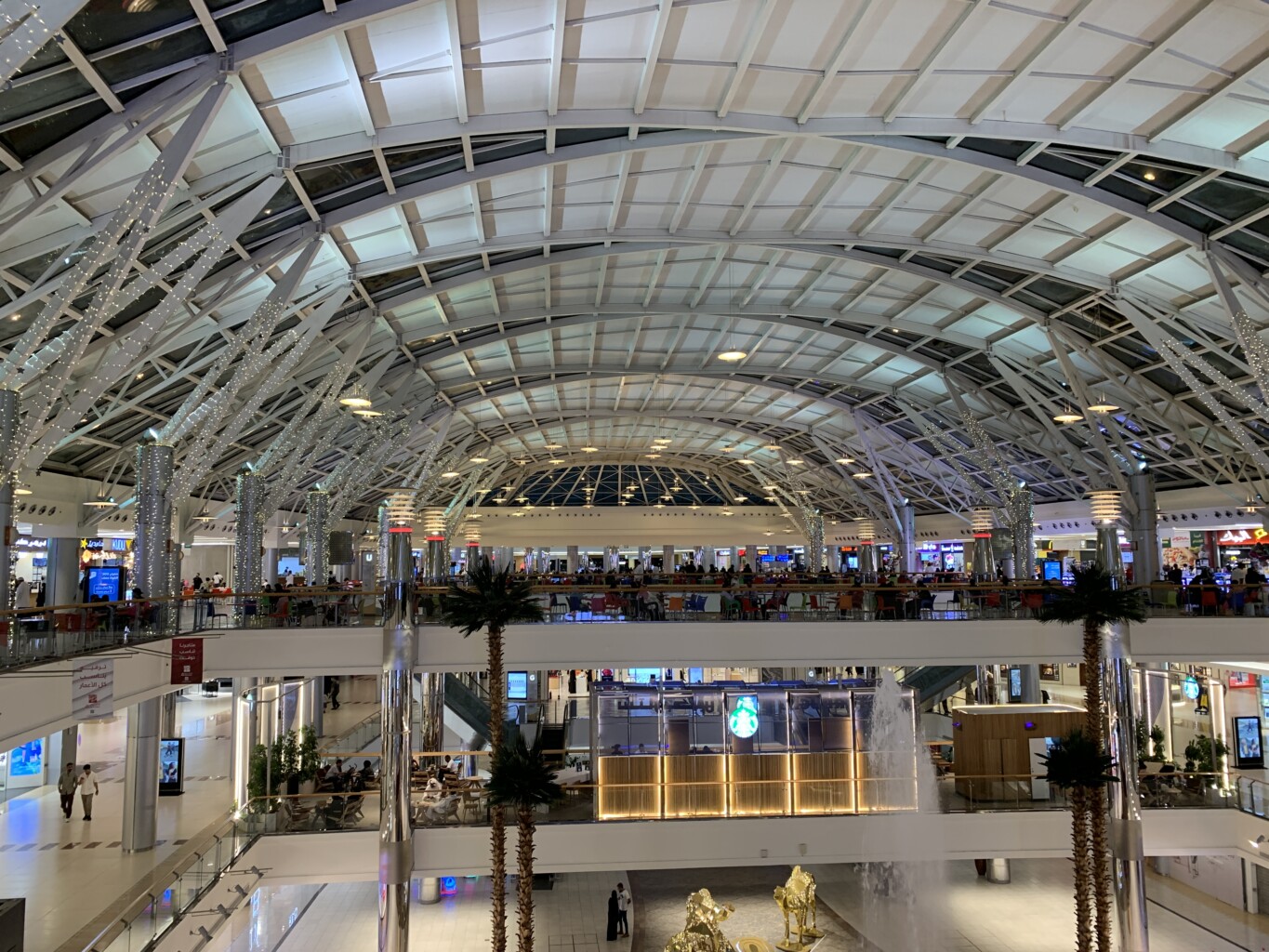
9. Taste the Flavor of Jeddah
Jeddah’s location by the sea influences its culinary scene heavily, with fresh seafood dishes that are a must-try.
For a taste of the seafood that Jeddah has to offer, I recommend that you check out one of the two following restaurants:
Saedi Fish: Located close to the boardwalk in the Al-Hamra district. Great for seafood with many different options, caught straight from the Red Sea. The prices are also reasonable.
Al Basali: This small little seafood restaurant, located in the Al-Balad (old town) is famous in Jeddah for its seafood meals. The restaurant entrance is covered with pictures of all the celebrities (international and domestic) who have visited the place.
Specific dishes that are worth trying for a taste of Saudi cuisine include:
Sayadieh: A fish and rice dish that’s popular in coastal areas. It’s made with seasoned rice and freshly cooked fish, often served with a special onion sauce.
Mezze: Although not unique to Jeddah, the mezze platters in this city often feature seafood variations, including dishes like calamari and fish samak.
Seafood Kabsa: A local twist on the traditional Kabsa, using seafood instead of chicken or lamb, reflecting Jeddah’s access to the Red Sea’s rich marine life.
Balila: A dish made of chickpeas, it’s seasoned with cumin, olive oil, and lemon juice, making it a perfect side dish or snack.
Al-Mandi: While commonly found throughout Saudi Arabia, in Jeddah, this dish often features seafood, providing a local spin on the traditionally meat-heavy recipe.
10. Explore Al Tayebat International City
The Al Tayebat International City is a cultural museum, housed in a striking building that mimics traditional Hijazi architecture (the region around Mecca, Medina and Jeddah) featuring intricate wooden windows and coral building techniques. The museum offers insights into the Islamic world and Saudi heritage. With over 300,000 artifacts, including Islamic manuscripts, textiles, and crafts, Al Tayebat will give you a deep dive into the history of the region and Saudi Arabia.
